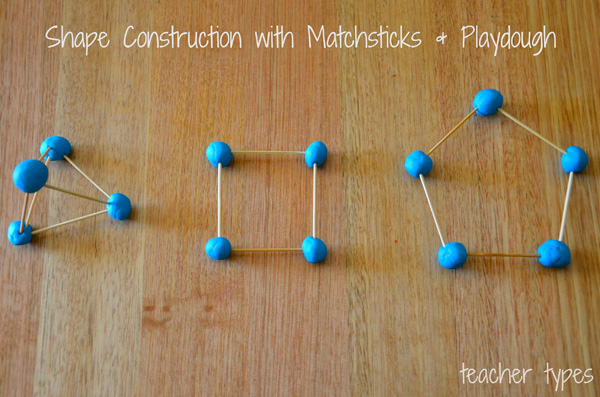Early Mathematical Activities – This includes sorting, matching, comparing and ordering sets of objects.
Socks can be used to make great early maths activities. I mentioned matching pairs of socks before but they can also sort socks according to colour or size. They can also compare the sizes of the socks and put them in order. Just using your families socks you can achieve all the objectives of this strand of the Junior Infant curriculum…without a book in sight!
Another very useful activity is to ask your child to find all the correct lids for your tupperware containers. They are also learning about shape and space by doing this.
Number – Create hopscotch on the ground outside with chalk, give your child an addition sum up and they hop to the right answer.
You could also write the numbers 1 – 5 (or 10, whatever your child is able for) in chalk on the ground and make water balloons with the same numbers written on them with sharpies. Give your child an addition sum, they find the correct balloon and throw it onto the corresponding number on the ground.
For other number activities see my post about number games.
Algebra – At this age, this is just about identifying, continuing and creating patterns. They can make patterns out of anything from lego, different coloured cars, toy animals, knives and forks or different types of leaves. This is a nice finger-painting activity from twinkl. com that you don’t need to print if you have a printer, you can easily be re-create it at home.
Shape and Space – Junior Infants are expected to learn about 3D shapes by exploring them and seeing which ones can roll and which ones can stack. Any play that your child is doing with different shaped blocks is achieving these objectives.
A feely bag game is also fun. Put a selection of objects into a bag and the child puts their hand in, picks an object and describes whether it is curved or if it has corners, whether it is big or small and if they think it will roll or stack. They then take the object out and see if they were right.
They can also make 3D or 2D shapes with playdough and toothpicks.

Other 2D shape activities can include drawing the shapes in shaving foam, making shapes from pipe-cleaners or lollipop sticks and creating pictures such as in the picture below. The 2D shapes that Junior Infants are expected to know are square, circle, triangle, rectangle.

Spatial awareness is another unit of this maths strand. Children should understand and use words such as over, under, down, on, beside, up, in, through. The story “We’re going on a bear hunt” uses lots of these words so you could help your child go on a bear hunt, using the words as you go.
Measures – This includes length, weight, capacity, time and money.
Ask your child if they can build towers of different heights and compare their length. Measure the distance from one place to another using feet (e.g. the couch to the TV or the kitchen table to the oven).
Baking is the best way that a child can learn about weight at home. Encourage them to feel the weight of the different ingredients before you put them into the mixing bowl and ask them to guess which one is heavier (e.g. holding a bowl with flour and a bowl with sugar, which one is heavier?).
Water play using different types of containers is the most appropriate way for children to understand capacity. Ask them to predict which container will hold more water and count how many cups of water go into each container to see if they were right. Experiment with containers of different sizes and shapes. Make sure they understand the words full, empty, holds more, holds less, holds as much as. You can also use rice or sand to explore capacity.
Junior Infants are not expected to be able to read the time on a clock. They should know the days of the week and understand the difference between morning, afternoon and night. They should also be able to sequence familiar stories. Choose a narrative story and ask them to show you where where the beginning, middle and end are and ask them what happens in each. You can also mix up some parts of the story and see if your child corrects you (e.g. “Goldilocks ate baby bear’s porridge first, then Daddy bear’s and then Mammy bear’s porridge…is that right?”)
If they are showing interest in the numbers on the clock you can encourage that by talking about the hands on the clock or watching the numbers change on a digital clock. Talk about what time they get up at, have lunch, dinner, and go to bed. You could also draw a large clock on the ground in chalk with a big hand pointing at 12. The child will be the small hand. Show them how to move clockwise by giving them a time to walk to in the right direction (e.g. make 3 o’clock, make 5 o’clock).
Junior Infants are only expected to recognise and explore 1c, 2c and 5c coins. Any pretend play games that involve playing with and using money can include teaching points about money. Set up a shop with their toys by making price tags (up to the price of 5c) and take turns with your child buying and selling the toys using real money. Introduce the concept of change (e.g. if they give you 5c for a 4c toy, you give 1c back).
Data – A lot of data is covered in the early mathematical activities, such as sorting and classifying objects and matching sets. These can be extended to include simple graphing. This is one of my favourites:

